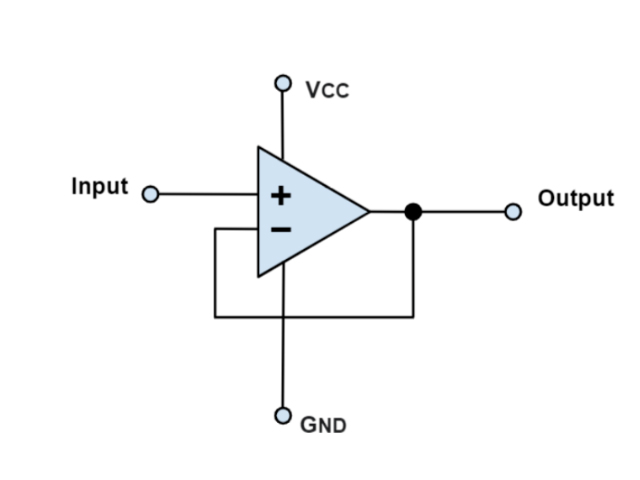This blog will mainly explain under what circumstances op amps require negative voltage, and when they do not.
An operational amplifier, often simply called an op amp, is an important electronic component that plays a key role in a variety of analog circuit applications. Op amps feature high amplification, high input impedance, and low output impedance, making them suitable for signal amplification, filtering, comparison, and many other applications. However, engineers have long wondered whether negative voltages are needed in op amp power supply configurations. This article will explain when op amps require negative voltage, and when they don't.
First, let's be clear: the op amp's power supply configuration depends primarily on the needs of the specific application. The op amp can operate in single-supply or dual-supply operation, depending on the application's characteristics and requirements. Here are some key factors to help decide whether negative voltage is required:

1. Single power supply
In single-supply mode, the op amp's power pin is usually connected to the positive supply voltage and ground. This configuration means that the op amp's input and output signals are referenced to ground as zero scale, eliminating the need for negative voltages. This is suitable for most general amplification and signal processing tasks. When both the signal source and the load are within range of a single power supply, a single power supply is usually sufficient.
2. Dual power supply
In dual-supply mode, the op amp's power pins are connected to the positive and negative supplies, allowing the op amp's input and output signals to cover the positive and negative voltage ranges. This configuration is typically used in applications such as signals that need to process positive and negative half-cycle waveforms, or specific sensor interfaces that require opamps to operate below zero level.
3. Differential input op amp
Differential input op amps usually require negative voltages. This is because their input ranges from negative to positive supply voltages, requiring a negative voltage as a reference for the input signal. Differential input op amps are useful in many precision measurement and amplification applications because they can handle bipolar signals.
4. Chopper op amp
Special types of op amps, such as chopper op amps, require negative voltages for their operating principles. Chopper op amps are usually used in DC signal processing to convert the DC component of the input signal into an AC component through chopping technology. In order to effectively eliminate the DC component of the output signal, a chopper op amp requires a negative voltage source.
5. Zero drift and automatic adjustment
High-precision applications may require a negative voltage source to achieve zero drift or to automate adjustments to ensure that the op amp's output is always near a specified zero point. This typically requires dual power supplies and may require additional components and feedback loops to be added to the circuit.
In summary, whether a negative voltage is required depends on the requirements of the specific application. In circuit design, engineers need to carefully evaluate the required signal range, accuracy, and functionality to select the appropriate power supply configuration and op amp type. Whether it is single power supply or dual power supply, it has a wide range of applications and can meet the needs of various electronic circuits. Proper selection of power supply configuration is critical to achieving the required circuit performance.
In addition, to ensure the normal operation of the circuit, you need to pay attention to the following points:
1. Stability and reliability of negative voltage source
In circuit design, factors such as the internal resistance and load effect of the negative voltage source need to be considered to ensure that it can provide a stable voltage.
2. Connect the power supply correctly
When connecting the power supply, you need to ensure that the positive and negative power supplies are connected correctly to avoid power short circuit or device damage.
3. Impedance matching
Consider the impedance matching of the signal source and load to avoid signal distortion or load overloading.
4. Conditions for using chopper op amp
If you use a chopper op amp, you need to pay attention to the settings of parameters such as the frequency and duty cycle of the chopper signal.
Overall, op amp power supply configuration is a complex but important design decision that affects circuit performance and functionality. Therefore, when selecting and configuring op amps, informed decisions need to be made based on the needs and constraints of the specific application to ensure that the circuit operates properly and meets design specifications.

